Times tables - a new way to learn
“Order and simplification are the first steps towards mastery of a subject” -Thomas Mann.
Our website introduces an innovative way to learn times tables. PDF downloads are free and feedback is welcome. The focus is on a 9×9 number pattern. And with good reason. Position holds the key. If the multiples of a number are always in the same position, then the values in that position will always be multiples of that number.
See how it works or read further for a short introduction.
It gives reason to argue that x 10, x 11 and x 12 should only be learnt later.
“The most dangerous phrase in the language is, ‘We’ve always done it this way.’” -Grace Hopper
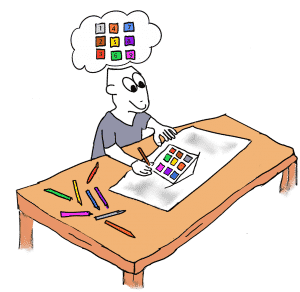
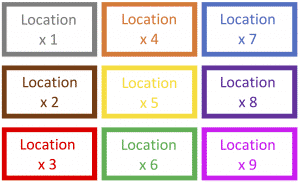
Memorising information
Below are two lists with the same set of 9 words. If you were asked to memorise the words in order, which list would be easier to remember?
candle
swan
heart
boat
snake
cherry
flag
snowman
balloon
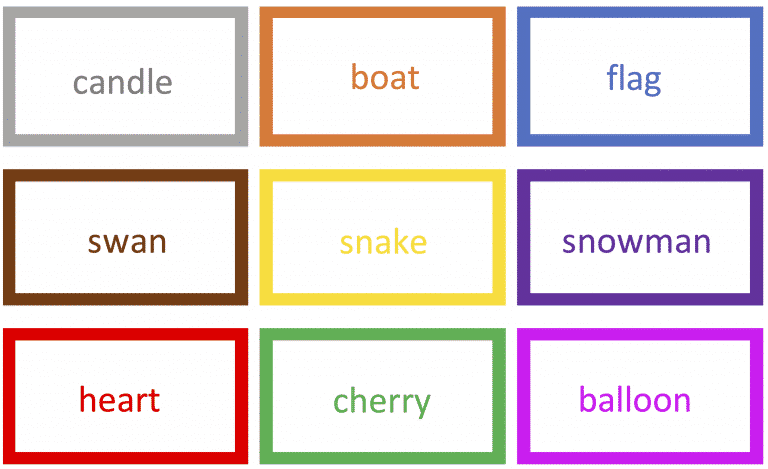
Structure - Sets of three
Regrouping the information into a 3×3 layout with 9 positions, can make it easier to learn and recall. It is similar to creating 9 imaginary rooms as described in the memory system referred to as the method of loci [1].
Equally, 9 positions of 9 specific colours, can further assist memory. For example, here the word “balloon” is in the colour PINK. Hence, if we know that the colour pink is always at the BOTTOM RIGHT, we can visualise a pink balloon.
Position holds the key! If we always put something in the same place, we always remember where to find it.
Then, why not apply these concepts to numbers in times tables?
For example, if the number 81 is in the colour PINK and if we know that the colour PINK is always a multiple of 9 which is also always at the BOTTOM RIGHT, we can remember that 9×9=81.
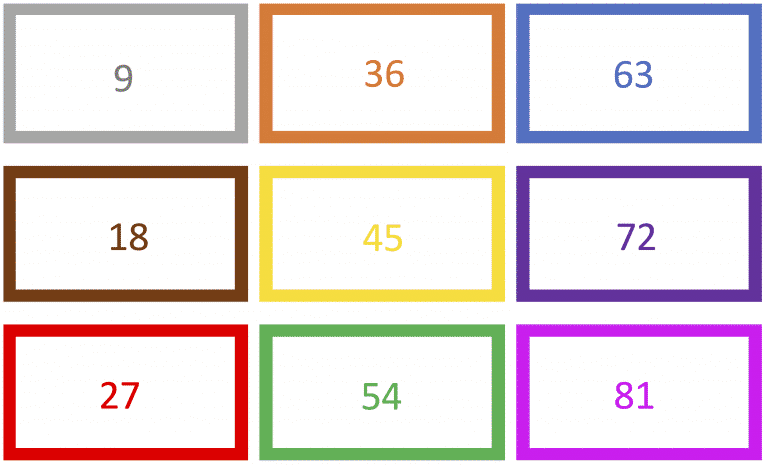
This 3×3 format yields a number set that is perfectly organised. So each number/multiplier holds a specific position, colour and image throughout.
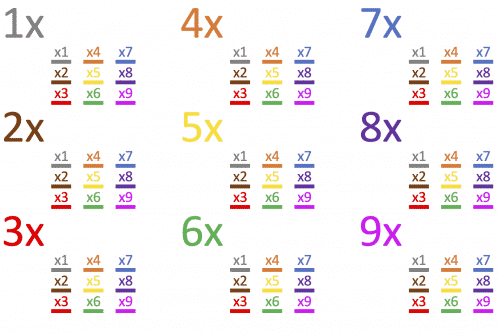
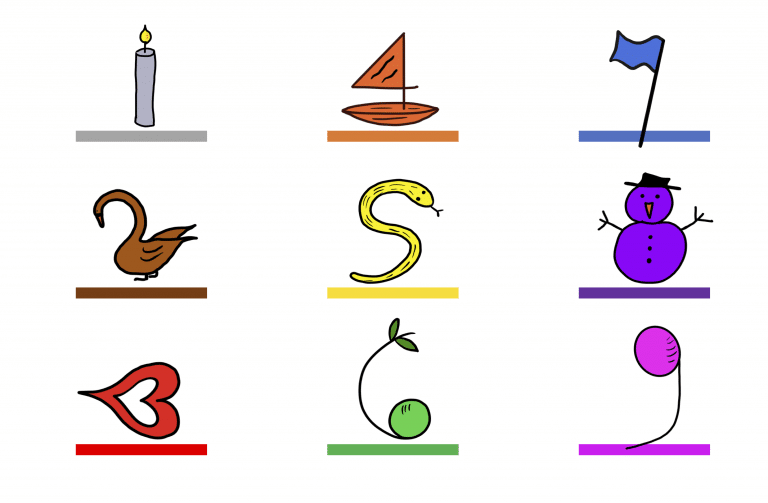
Order of data
Times tables are sorted by column ↓. The transposed alternative would be to order the numbers by row →. The same concepts apply.
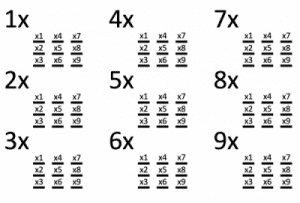
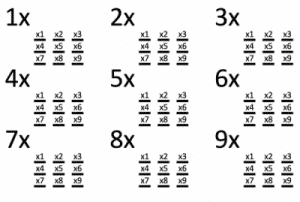
Symmetry and geometry
Both methods of sorting the times tables result in square number symmetry.
Students learn by number, position and colour. Symmetry can later be introduced as a mathematical surprise.
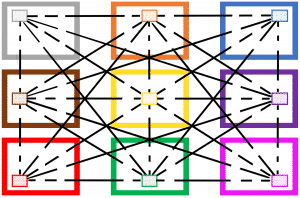
How to learn
We learn one set of multiplication tables at a time.
Not only will we eventually know the entire structure, but we will also associate numbers according to position, colour and image.
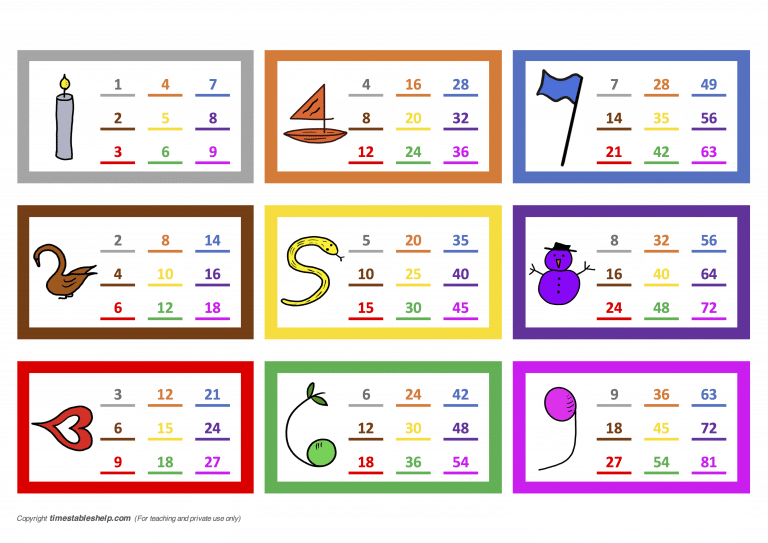
The picture within each table is identical to the overall big picture. Both consist of 9 positions, 9 colours and 9 images.
a x b = b x a
The answer can only be in the colour that is associated with “times a” or “times b”.
For example the colour that we associate with x7 is blue while the colour associated with x3 is red.
3x7 = 21 blue, position and colour associated with x7 within 3x table
7x3 = 21 red, position and colour associated with x3 within 7x table
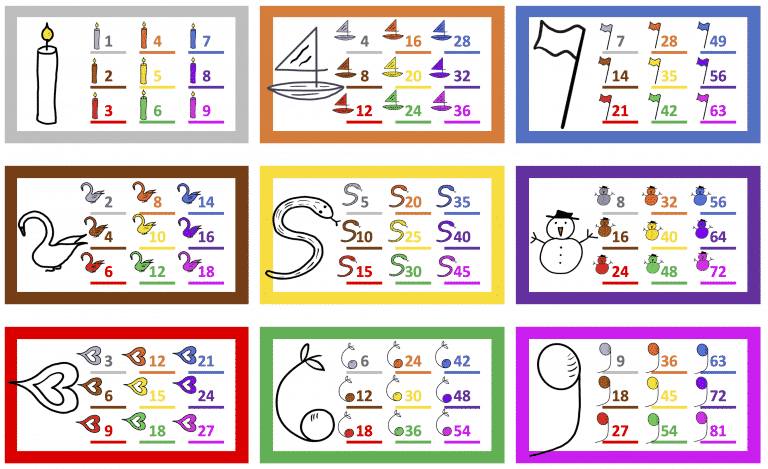
References
[1] McCabe, Jennifer A. – Teaching of Psychology, (2015) – journals.sagepub.com – Location, Location, Location! Demonstrating the Mnemonic Benefit of the Method of Loci.
